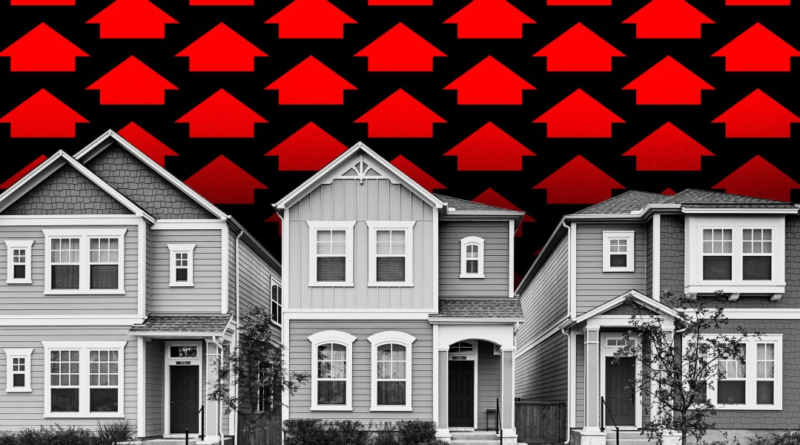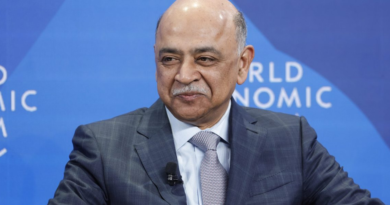Zillow just raised its home price forecast, seeing a 3.7% jump in 2024, and it’s all because of ‘external factors’
Just as things had started looking up for the U.S. housing market, with mortgage rates dropping modestly, on Thursday Zillow revised its outlook for home prices in 2024. Its previous forecast had called for home prices to stay flat this year, but now it sees home values rising 3.7% this year.
Zillow said its revision is based on “external factors,” including a decline in mortgage rates and an improved inflation outlook from the Federal Reserve. In other words, it’s not a big change within the composition of housing itself or the activity of homebuyers—like some kind of huge rush of inventory or a sellers’ market suddenly morphing into a buyers’ market. The recent decline in mortgage rates means that monthly payments on a new mortgage for a typical home are now $1,790, which is $413 cheaper than in October 2023, Zillow senior economist Nicole Bachaud tells Fortune.
“This unlocks some more buyers to be able to shop for a home if rates stay lower this spring, which will increase competition,” she says. An improved inflation outlook could mean mortgage rates “staying off their peaks and floating down to a small degree,” which would “also bring both buyers and sellers back to the market, putting some upward pressure on home prices.”
Redfin also reported on Thursday that home prices were up 5.1% during the four weeks ended Jan. 21, the biggest increase since October 2022. Asking prices were up 6.5%, also the largest jump since October 2022. However, Redfin predicts a 1% decline in home prices year over year in the second and third quarters of 2024, marking the first time prices would decline since 2012, chief economist Daryl Fairweather tells Fortune.
“However, there is much uncertainty,” she notes. “Although I think a price decline is more likely than a price increase, a price increase is still possible.”
Historical home price increases
Although Zillow predicts that home prices will increase this year, 3.7% appreciation is actually somewhat normal, Bachaud says.
“Since 2020, the housing market experienced far wider ranges of home price growth and declines,” she says. “By moving to an expected 3.7% in the year ahead, appreciation is more in line with the market’s historical norms.” She defines historical norms as a 3% to 5% increase.
In fact, Bachaud assures buyers that home prices likely will not see pandemic-type growth again.
“While we are expecting to see prices rise, we are not expecting home prices to accelerate to the highs we experienced during the pandemic,” she says. “The 3.7% forecast for the next year is in line with historical housing appreciation levels, so we wouldn’t consider this movement a ‘drive up’ in prices.”
Other housing market factors to watch
While Zillow’s revision on Thursday was mostly driven by mortgage rate declines and an improved inflation outlook, there are other housing market factors that could drive changes in home prices.
“Housing inventory has been a key player in home price movements over the past few years,” Bachaud says. “With such limited inventory and an unrelenting level of demand, prices took off.”
But 2024 has started to show some new inventory entering the market, she adds. This includes existing homes going on the market from homeowners who are “finally feeling ‘unlocked’” from extreme mortgage rates, which caused a lock-in effect. This phenomenon showed current homeowners staying in place to avoid reentering a market with mortgage rates higher than what they had previously experienced. She also credits a “building boom” in 2021 and 2022 for an increase in inventory because those homes are now finally making their way to the market.
“This increased inventory will help to offset some of the demand in the market and will help to keep prices in line with historical appreciation instead of rapidly accelerating,” she says.
Inventory is typically low in January, Fairweather reminds buyers. But Redfin also predicts that the number of new listings will “climb from its record low in 2023 as the mortgage rate lock-in effect eases,” she says.
Still, mortgage rates are really the biggest factor driving home prices, Fairweather says. If mortgage rates do fall, then more homebuyers will enter the market, which creates competition and drives up home prices.
And “mortgage rates could fall if inflation eases faster than expected,” she adds. “Conversely, if inflation makes a comeback, possibly due to global conflicts, mortgage rates might increase.”




